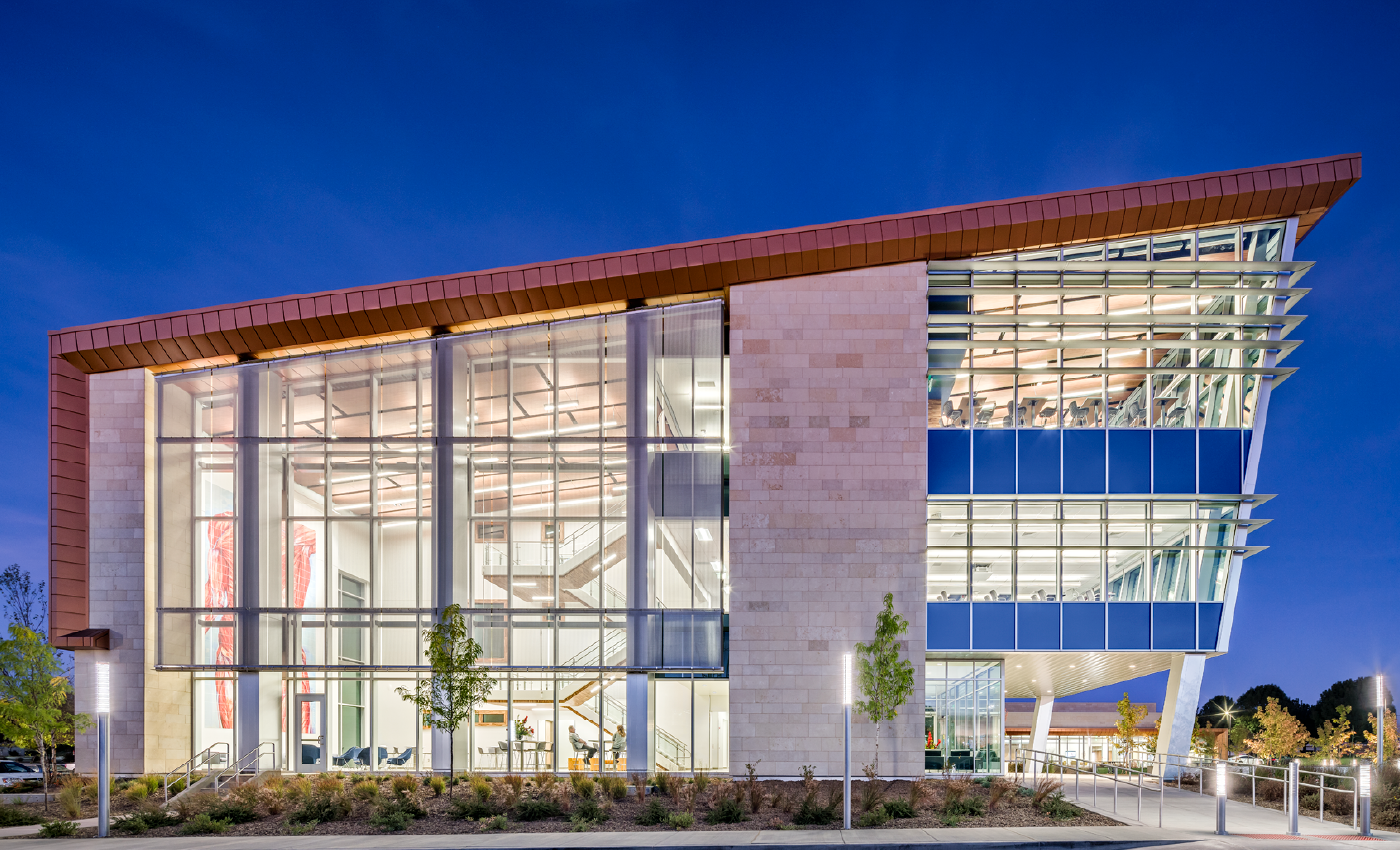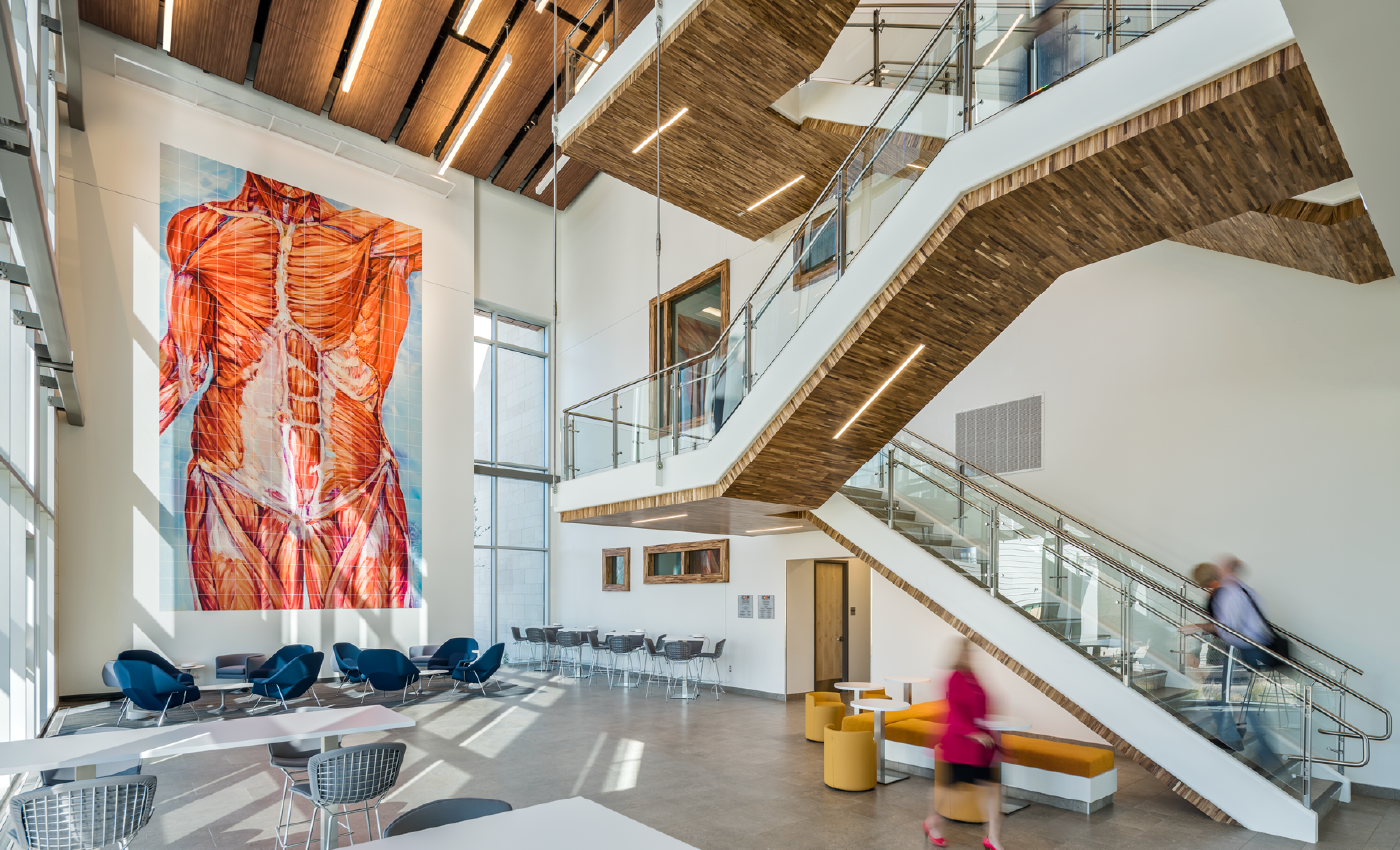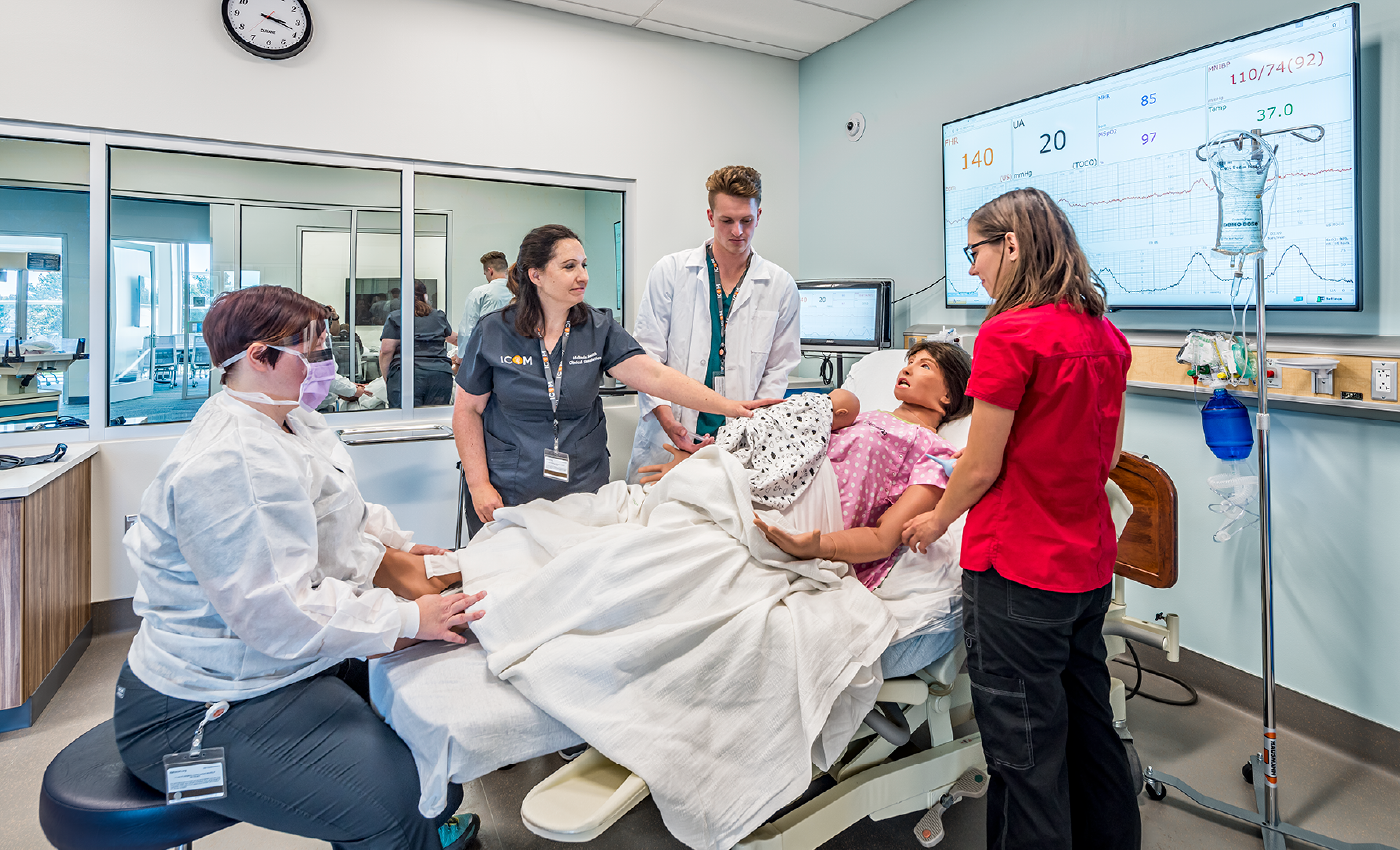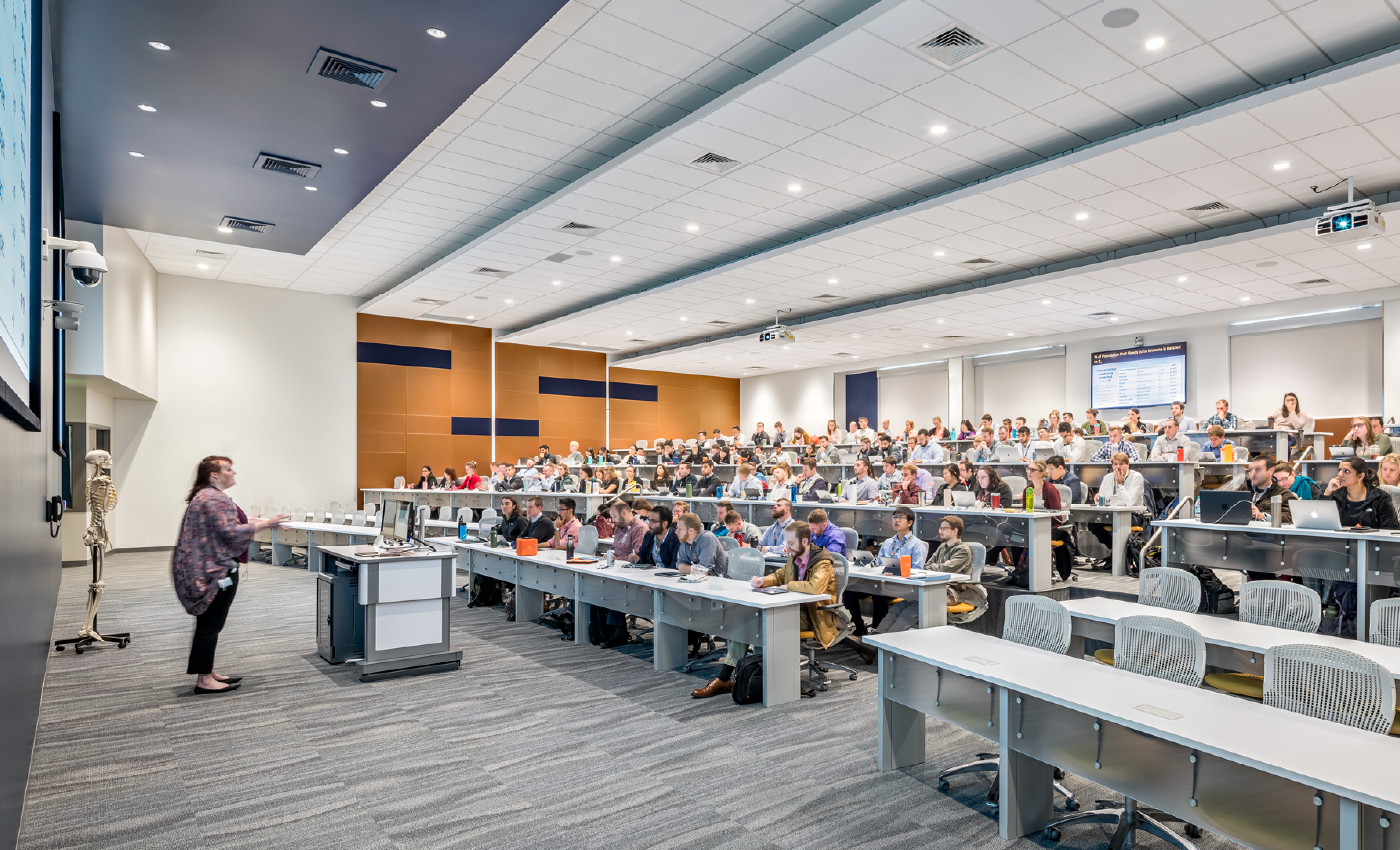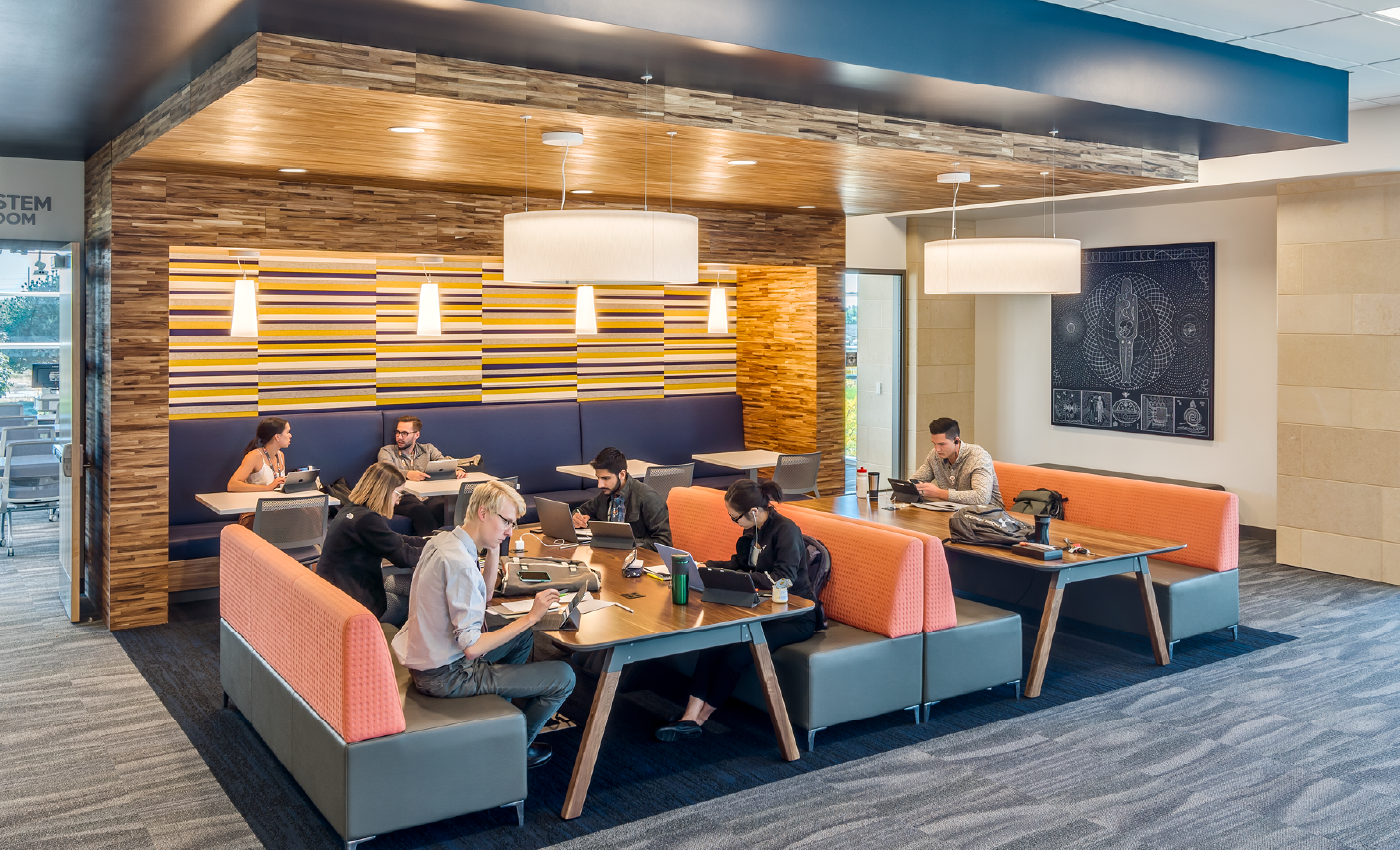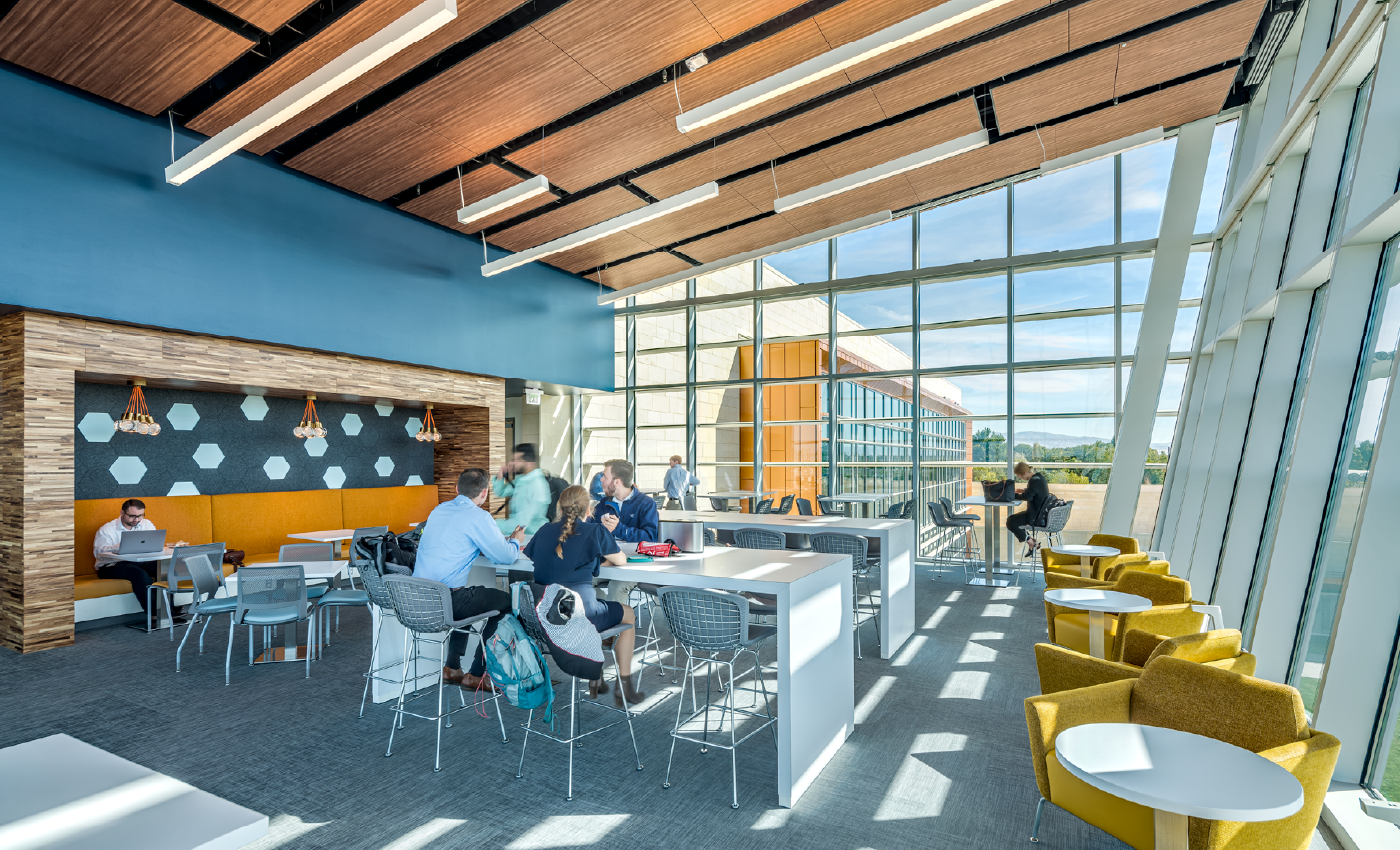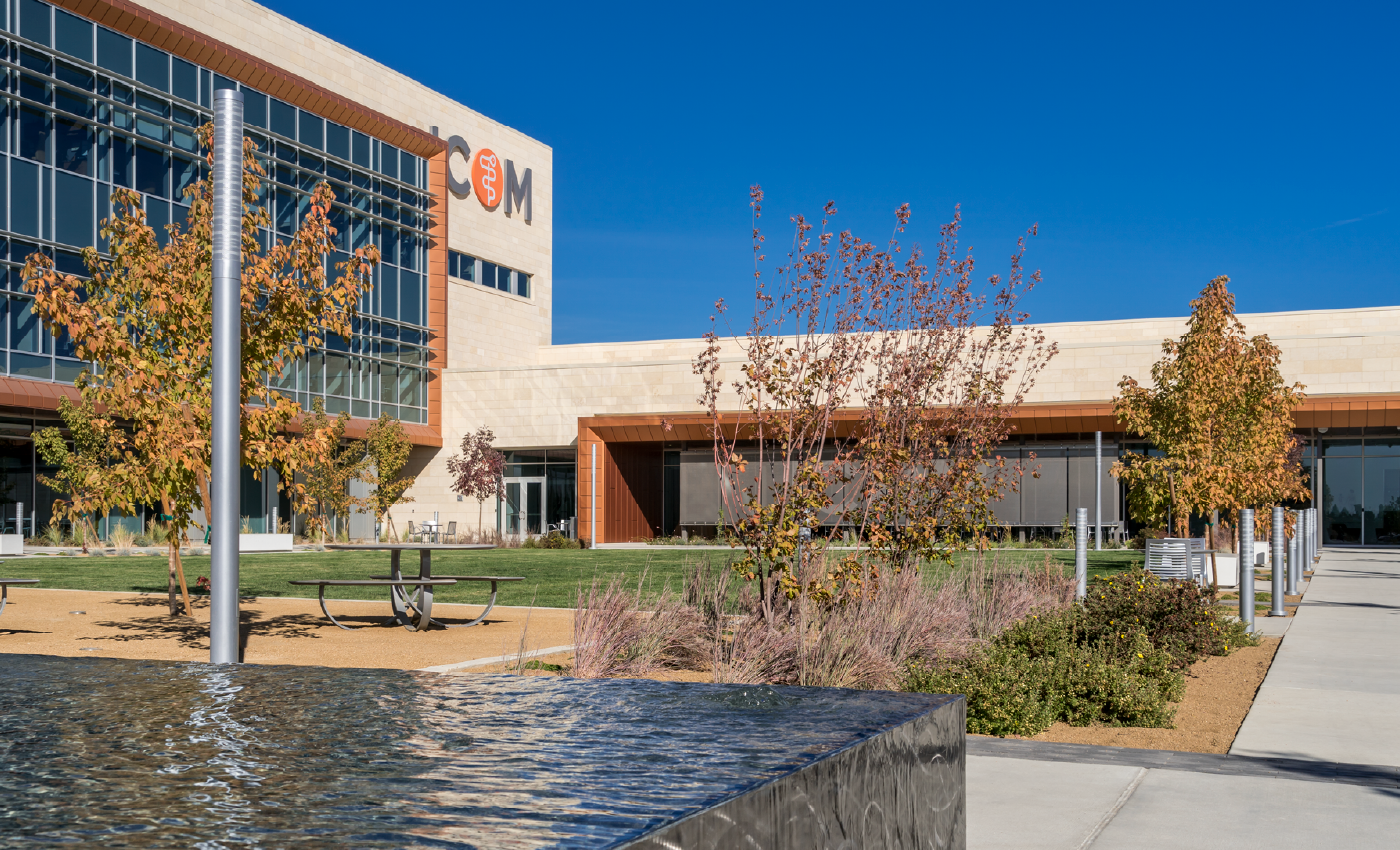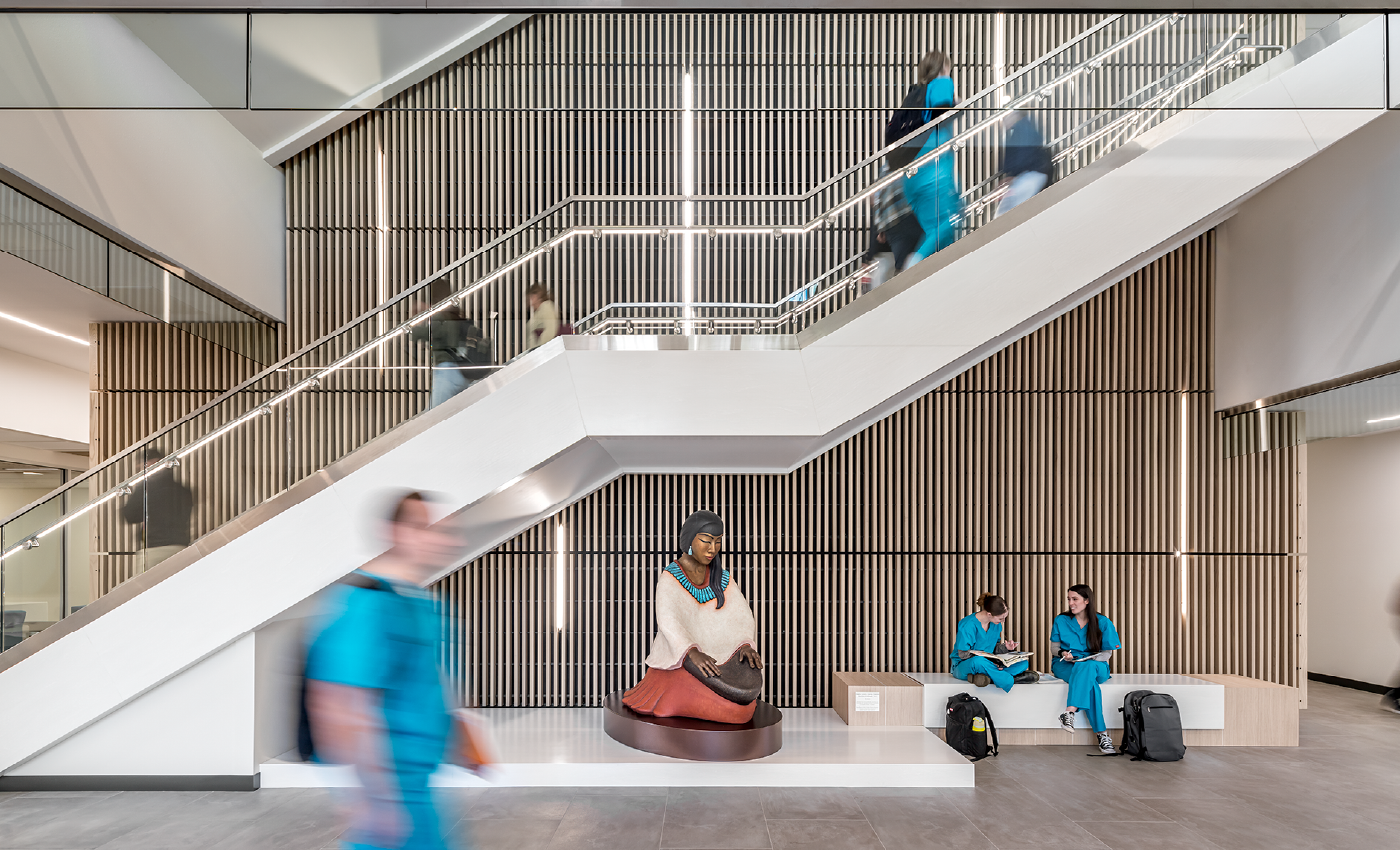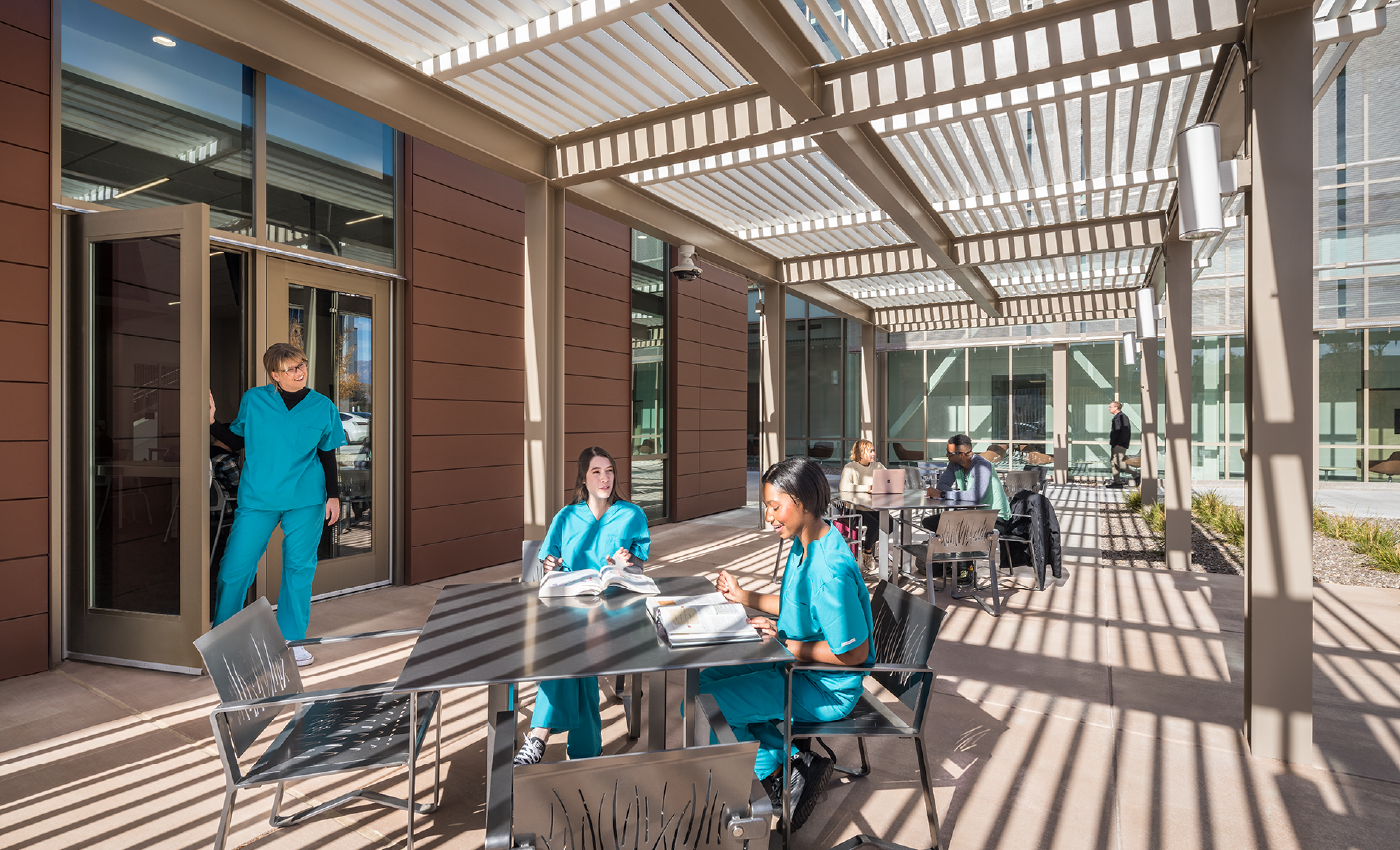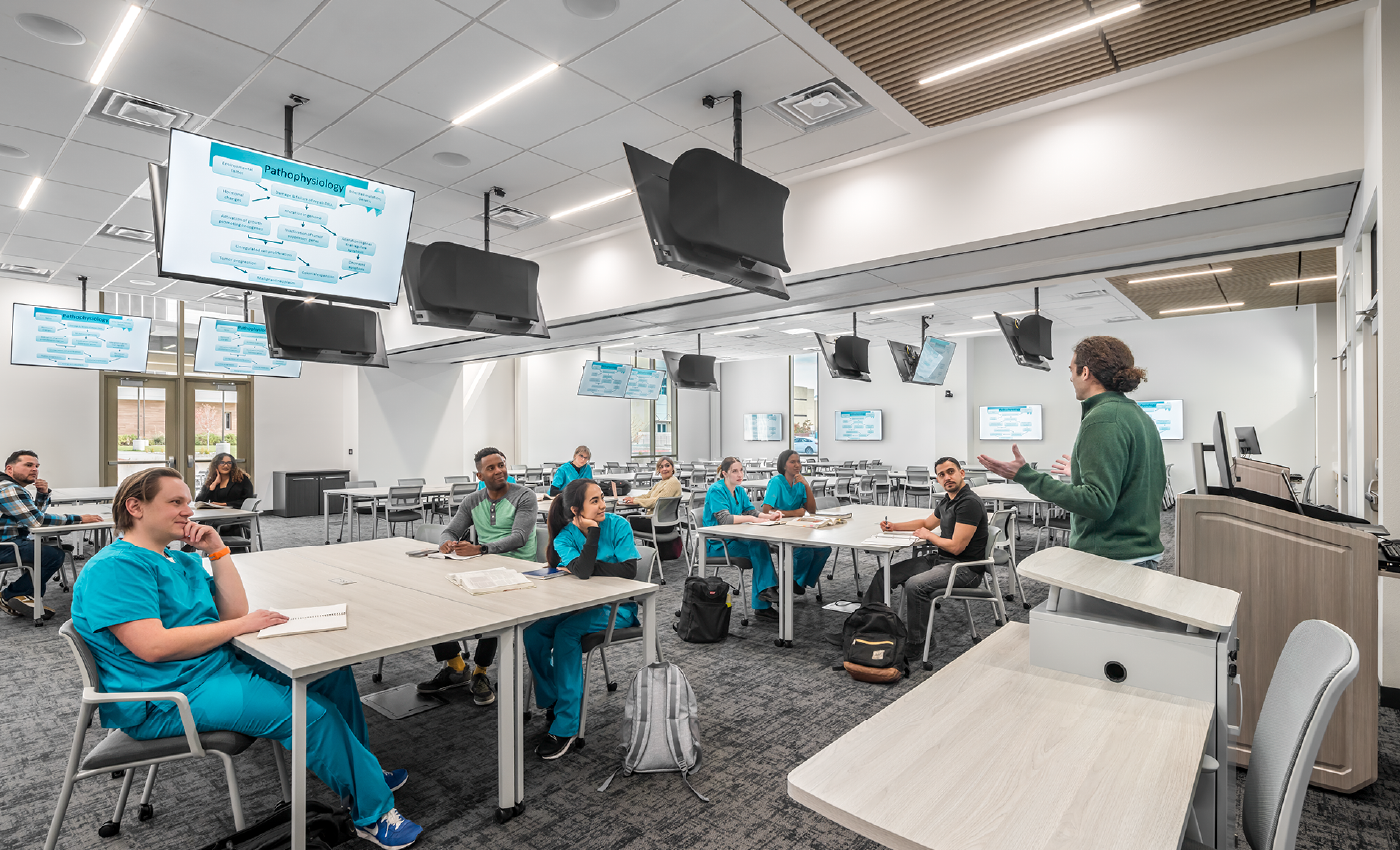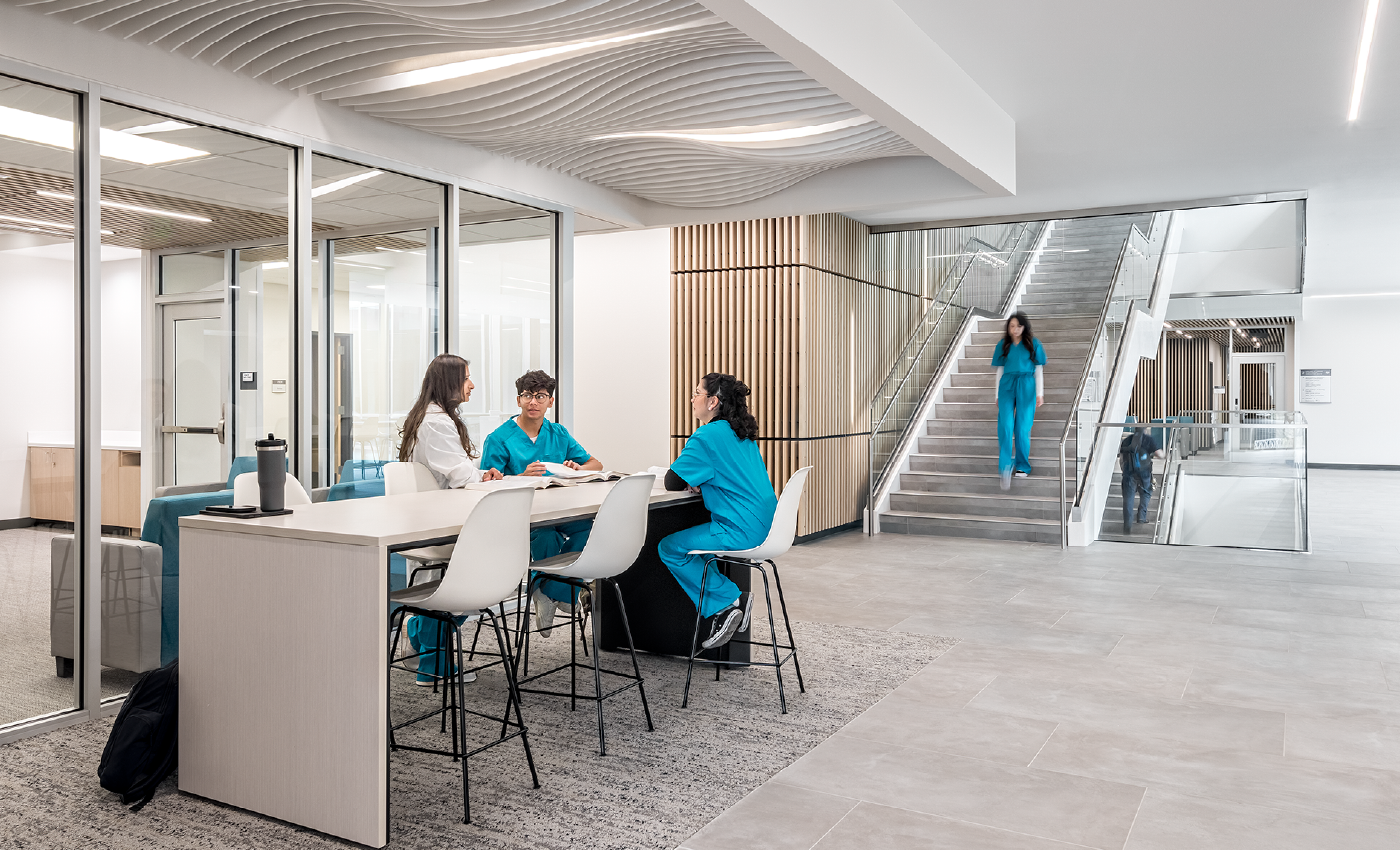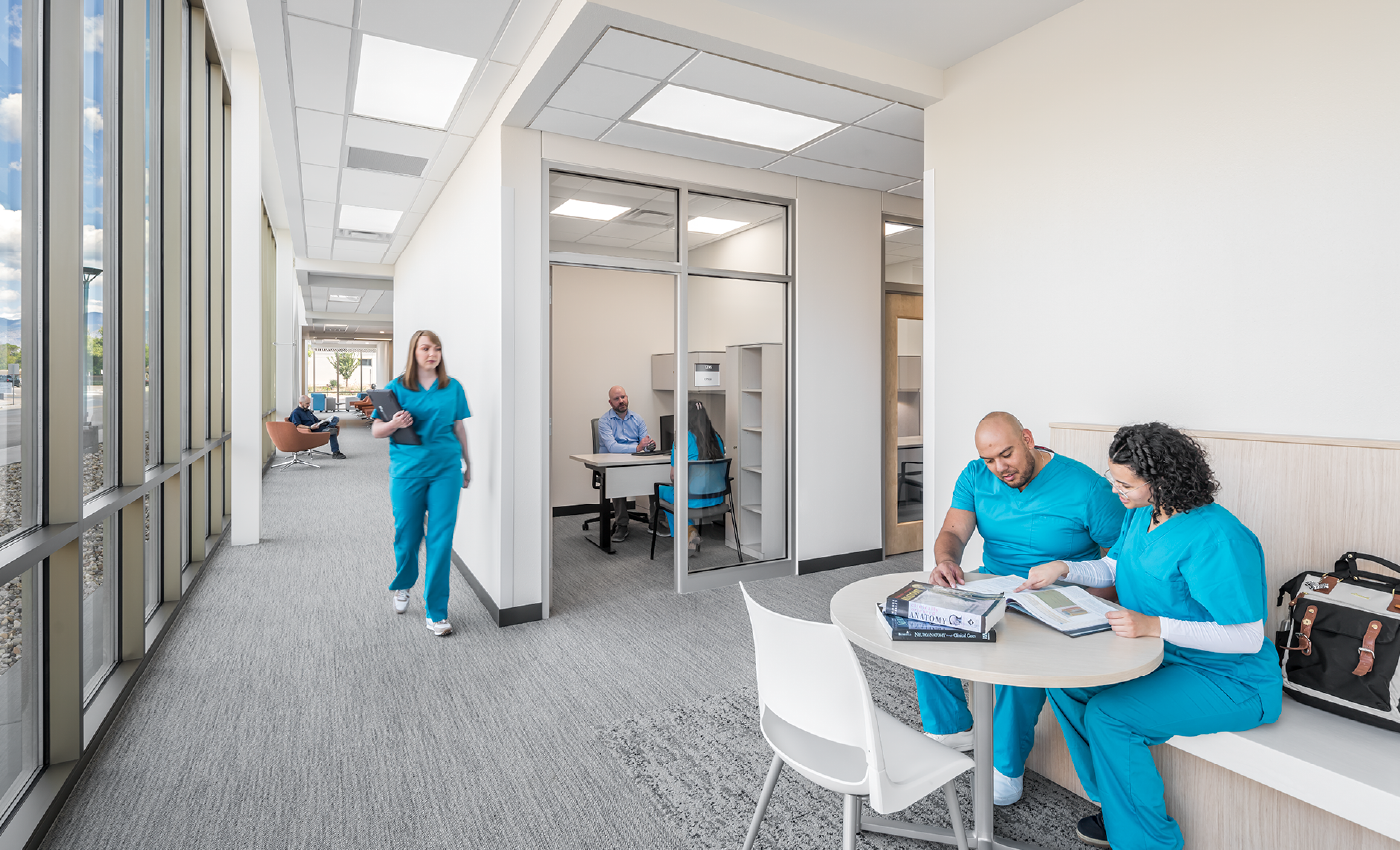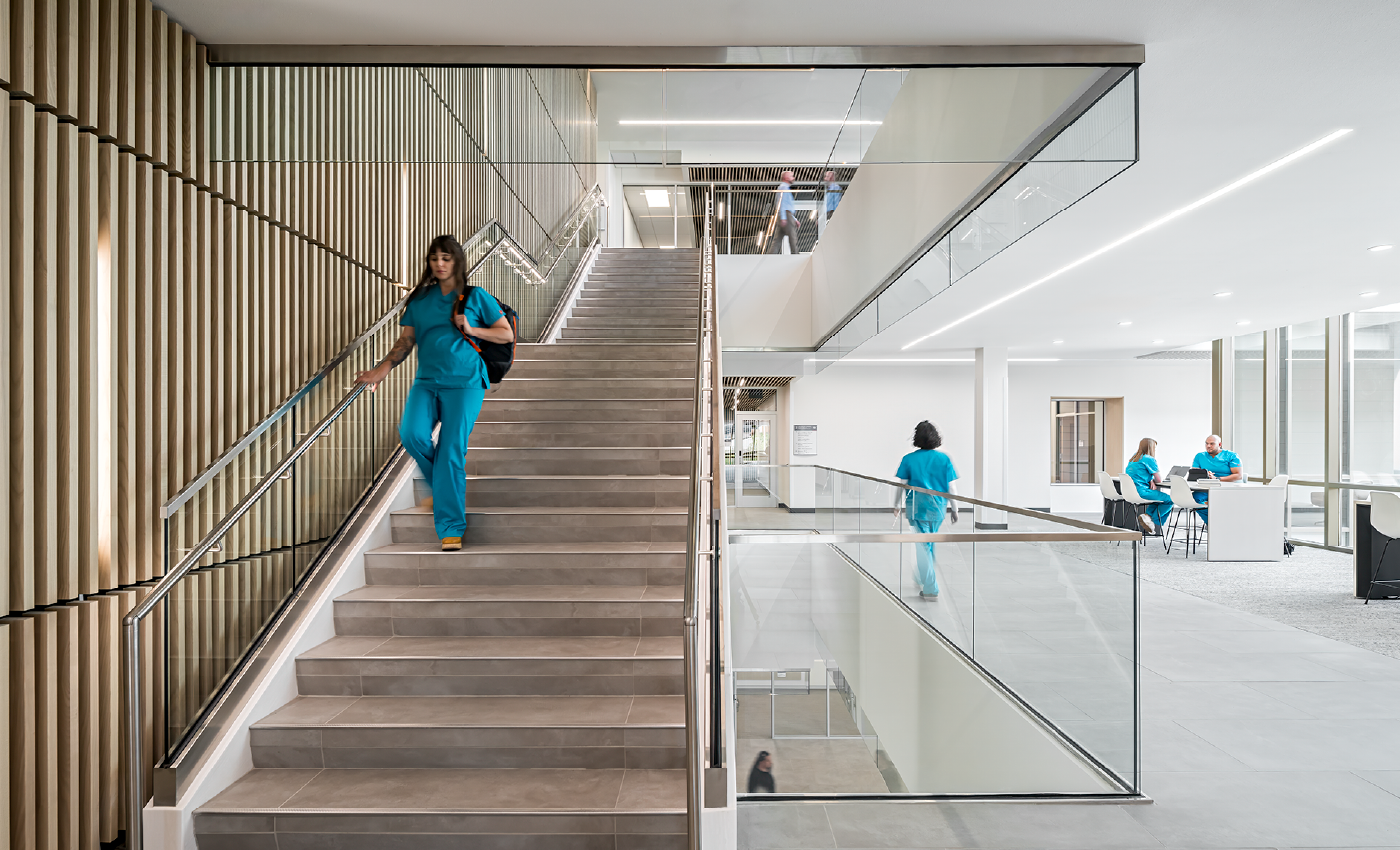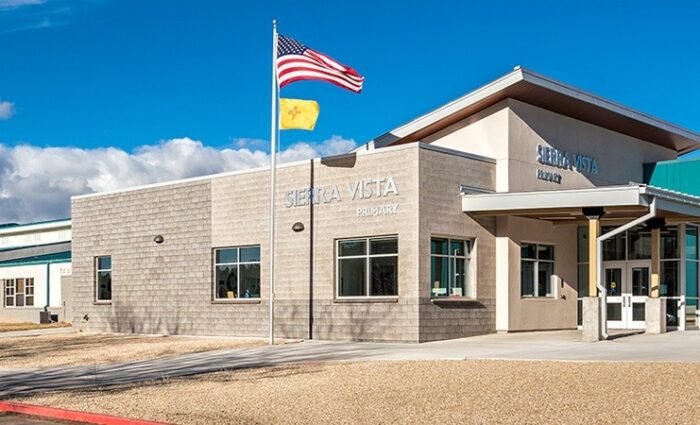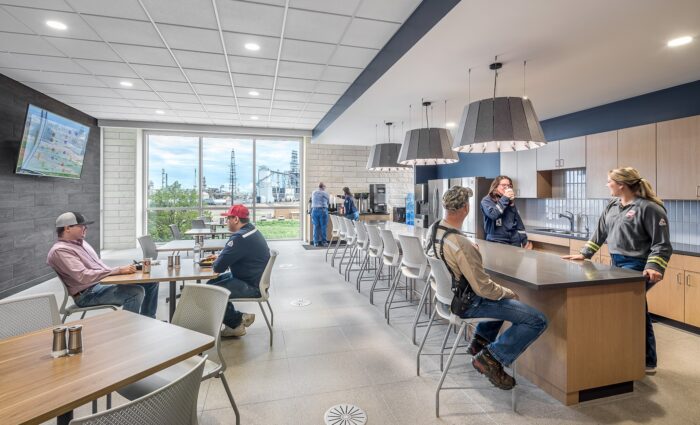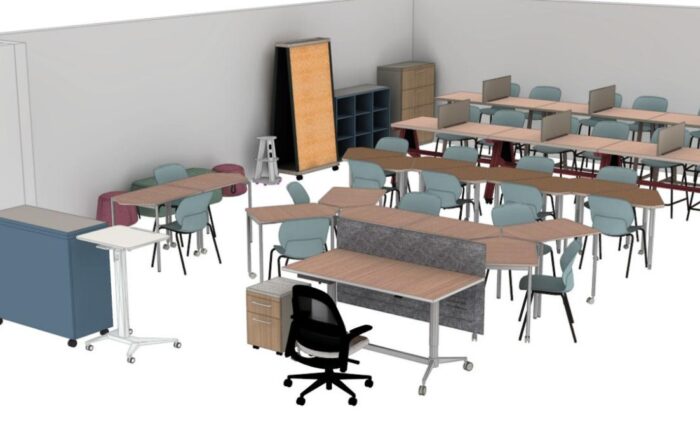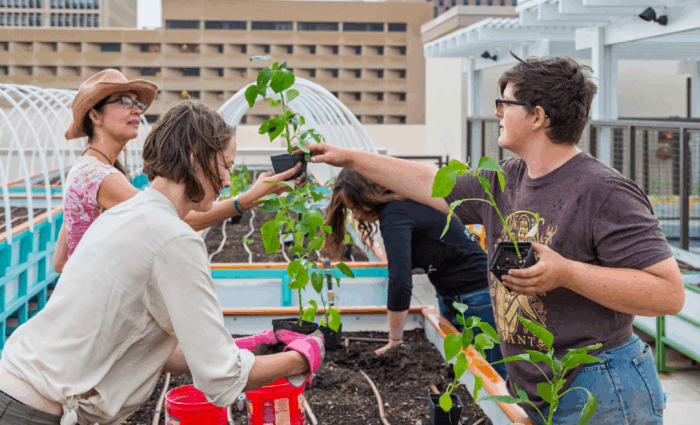Designing for the Future of Medical Education
As the nation faces a rising shortage of healthcare professionals, the need for well-designed medical education architecture has never been more urgent. A well designed space supports and inspires the next generation of healthcare providers to serve their communities.
The Association of American Medical Colleges projects a shortage of over 85,000 physicians by 2036. Similarly, a 2021 report revealed a shortage of more than 6,000 nurses and nearly 2,000 EMTs in New Mexico alone. Compounding the challenge, 39% of New Mexico doctors are over the age of 60, with many expected to retire by 2030.
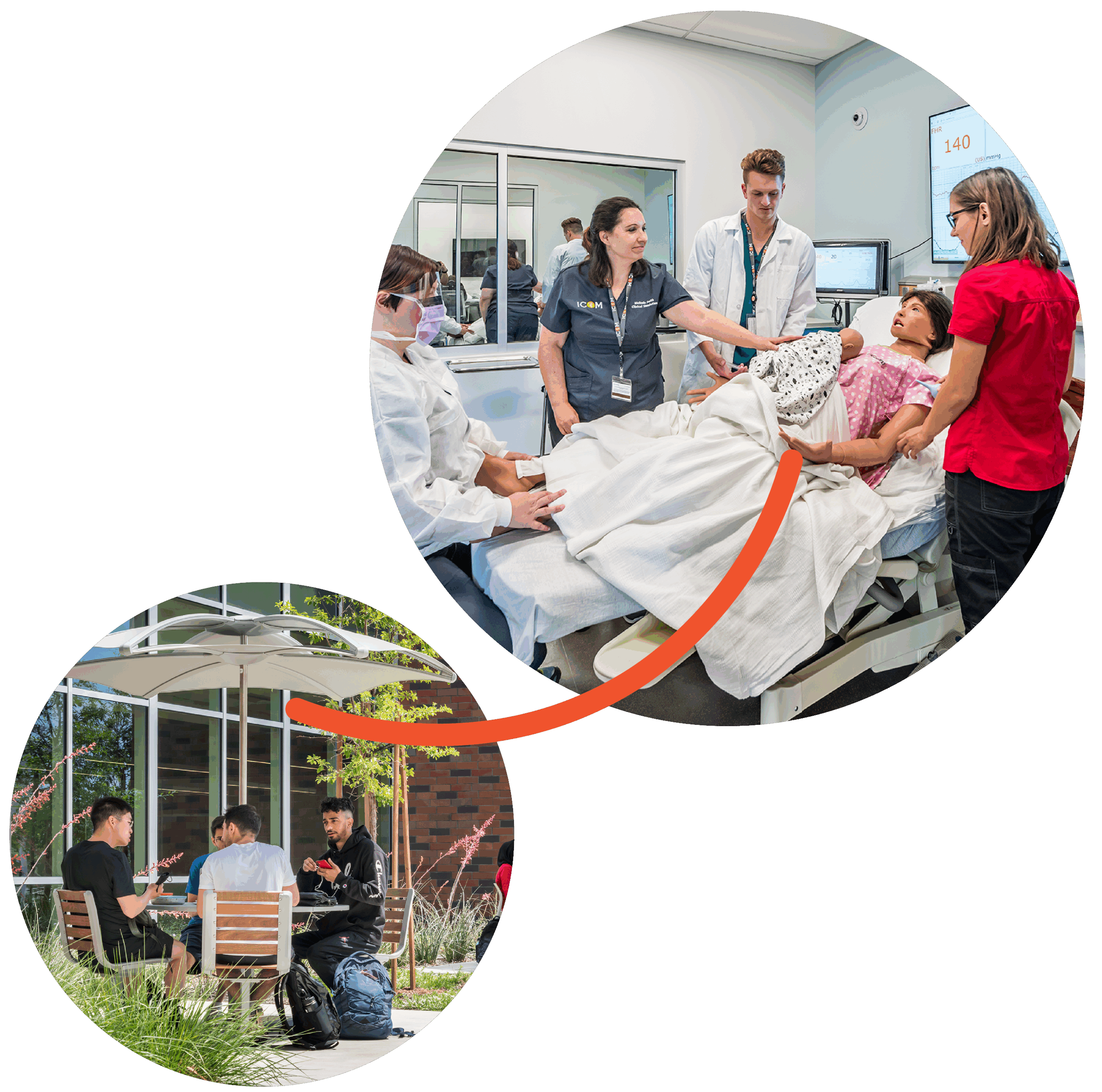
Addressing this crisis begins with designing the places where healthcare professionals are trained. Medical and health sciences education spaces must be flexible, immersive, and supportive. Programs must prepare students not only academically, but emotionally and physically for the demands of their careers. Our work draws on decades of experience in both higher education and healthcare architecture, enabling us to design facilities that bridge both disciplines.
Read on to learn how we design colleges of medicine and health sciences buildings that shape the future of care.
Colleges of Medicine: Preparing whole-person healers
Medical education architecture requires designing for both rigor and resilience.
Idaho College of Osteopathic Medicine and the Burrell College of Osteopathic Medicine include specialized environments for anatomy labs, simulation centers, and clinical learning, while also promoting student well-being and community.
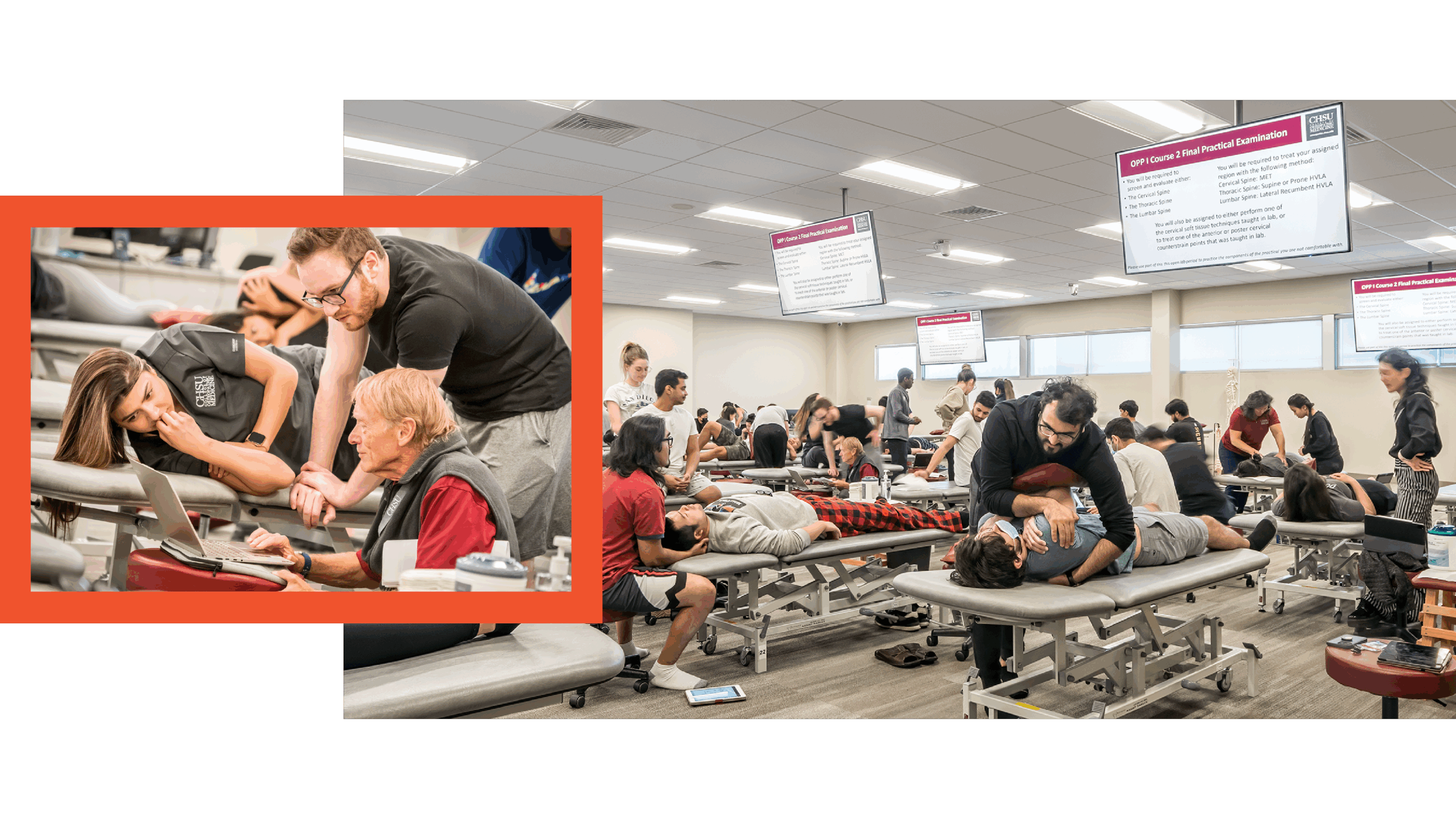
Our work with colleges of medicine emphasizes:
- Hands-on learning through simulation and clinical practice spaces
- Comfortable, inclusive environments that reflect the mission of osteopathic medicine
- Biophilic and student-centered design to support mental wellness
- Efficient layouts that foster collaboration among students, faculty, and staff
Each design feature serves a dual purpose, to uphold the academic medical training and to nurture the humanistic values at the core of medicine. Our approach ensures that these institutions not only educate competent doctors but also cultivate compassionate healers.
Project Highlight: Idaho College of Osteopathic Medicine
At Idaho College of Osteopathic Medicine (ICOM), our team created a campus designed to grow with the school. Labs, classrooms, and student gathering spaces are aligned along a central common, with views of the Boise Foothills anchoring a sense of place and calm. Flexible, open spaces support varied pedagogies and evolving healthcare technologies.
The facility includes a large lobby, admissions, library, simulation spaces, osteopathic manual manipulation lab, standardized patient clinic simulation suite, lecture halls, small group study rooms, and a number of student lounge and support spaces. It is further supported by an existing anatomy lab within the ISU-Meridian building.
Health Sciences buildings: Training a skilled workforce
Health sciences programs in community colleges and universities help train healthcare providers to work in their own communities. Our health sciences projects support a wide range of disciplines—from nursing and allied health to pharmacy and public health.
Medical education architecture is highly technical, with a mix of simulation classrooms and laboratories. They must also be rooted in the human experience, with bright, accessible learning environments that reflect the values of the healthcare professions.
At the University of New Mexico College of Nursing and Public Health Excellence, we designed a modern, expanded facility that accommodates the growing demand for nursing education while elevating the student experience. The building features natural light, views to green space, flexible classrooms, and collaborative areas. Our aim is to create a supportive environment that attracts and retains students and faculty alike.
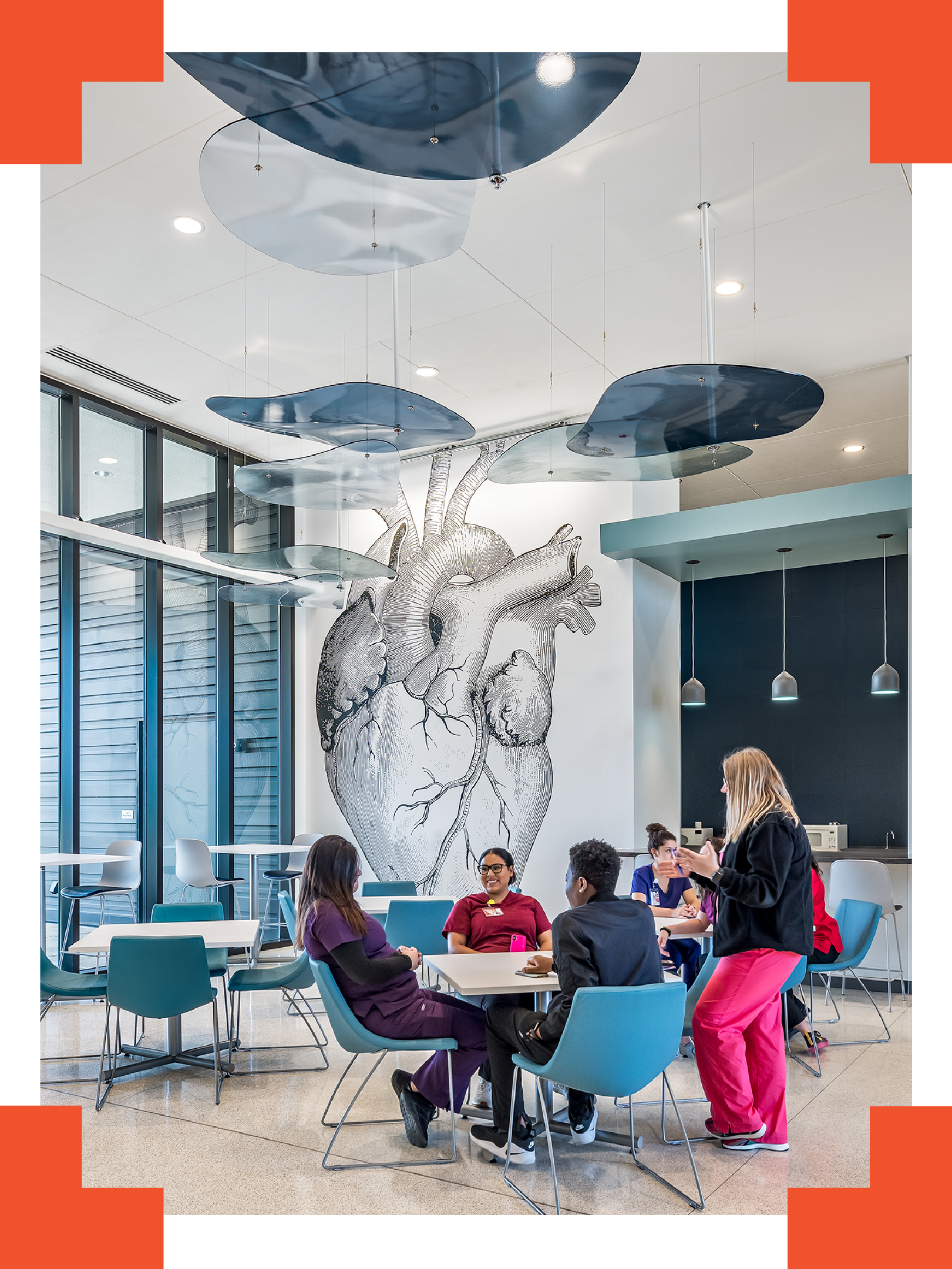
Project Highlight: University of New Mexico Health Sciences College of Nursing and Public Health Excellence
The UNM College of Nursing and Public Health Excellence is designed to exceed typical sustainability standards and is on track for LEED Silver certification. It uses 50% less energy than standard campus buildings, features water-saving systems, low-VOC materials for improved air quality, and biophilic design elements to enhance natural light and collaboration.
A central staircase encourages healthy habits and fosters spontaneous interaction across the building’s three floors. Classrooms are flexible, with partitions allowing for both small and large class sizes to suit the needs of Public Health and Nursing programs. Safety and openness are prioritized through crime prevention through environmental design strategies, including low walls and clear sightlines, creating a secure, welcoming space at the campus edge.
Building blocks of medical education architecture
To create effective learning environments for healthcare student, it’s essential to consider the full spectrum of educational needs from immersive, hands-on experiences to precise, controlled laboratory work. The design of these spaces must support evolving pedagogies while maintaining the realism and flexibility needed to prepare students for real-world clinical environments.
Simulation classrooms
Simulation spaces are a cornerstone of modern medical education architecture. These areas mimic real-world environments, from operating rooms and emergency departments to patient homes while allowing students to practice, fail safely, and learn.
Our designs include:
- Flexible layouts for different care scenarios
- Observation rooms and control booths for faculty assessment
- Debrief spaces to encourage peer learning and reflection
- Design features that foster a culture of collaboration and realism
Simulation classrooms help students "fail safely" by introducing them to near real-world conditions. These active classrooms encourage hands-on training and peer-to-peer learning.
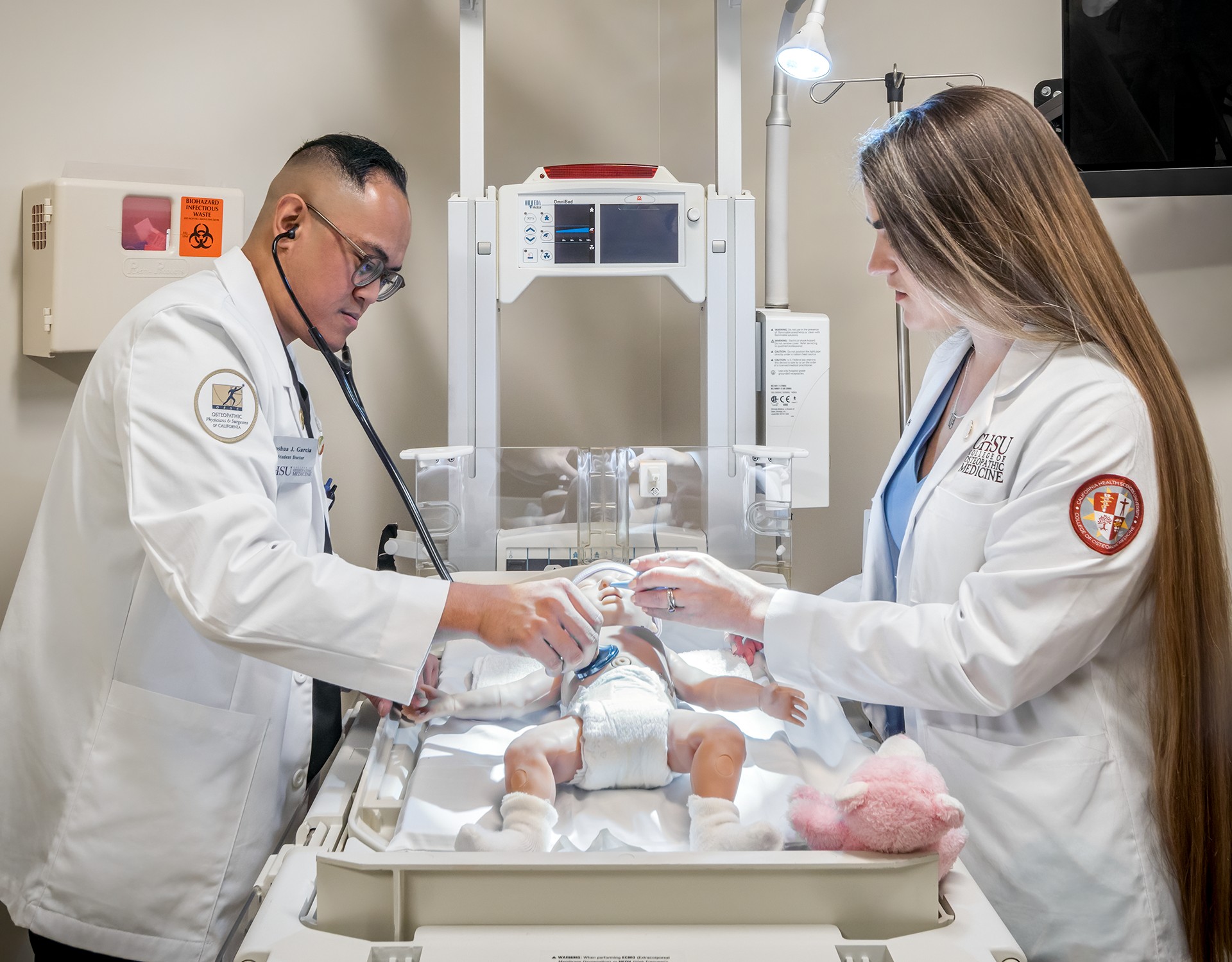
Laboratory design
Lab design in healthcare education often span disciplines from microbiology and anatomy to pharmacology. These labs require careful consideration of mechanical, electrical, and plumbing (MEP) systems, safety protocols, and space flexibility.
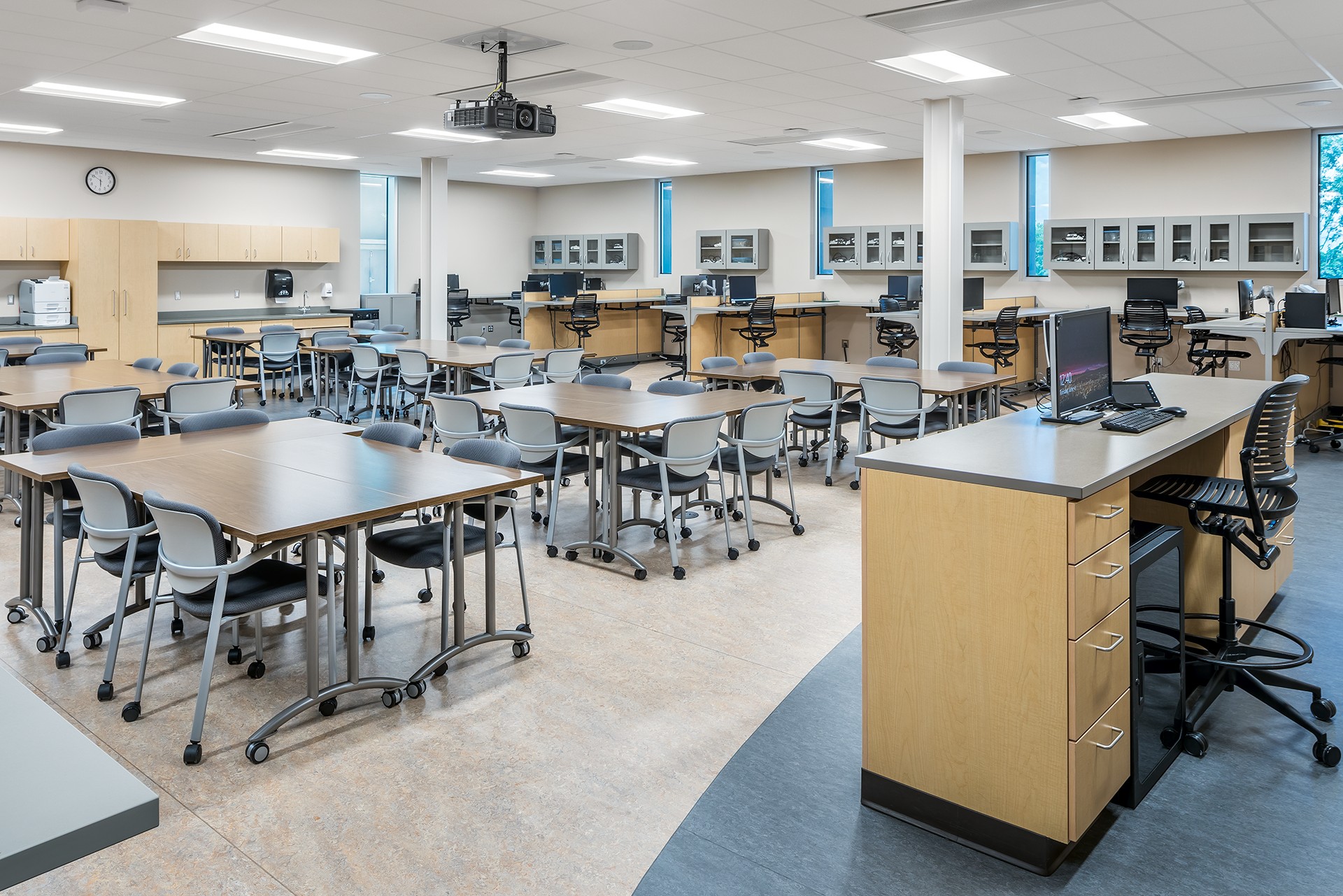
We design laboratories with:
- Strategic placement of MEP systems to allow for future reconfiguration
- Transparency and visibility to promote collaborative learning
- Integrated technology to support evolving curricula
- Secure design to restrict access to controlled materials
Beyond functionality, these labs are designed to inspire curiosity, critical thinking, and interdisciplinary engagement. Whether students are analyzing tissue samples or studying drug interactions, the lab environment must support both academic rigor and adaptability to future advancements.
Student and staff wellness
Caring for healthcare students starts with caring for their learning environments. Our designs prioritize wellness, integrating biophilic design strategies, daylight access, and comfortable gathering spaces.
Strategies include:
- Views to nature and use of natural materials
- Outdoor and indoor rest areas
- Social spaces to foster connection and reduce burnout
We align our work with our Dekker Sustainable Design Standards, ensuring every healthcare education project includes sustainability and intentional wellness strategies no matter the scope or budget.
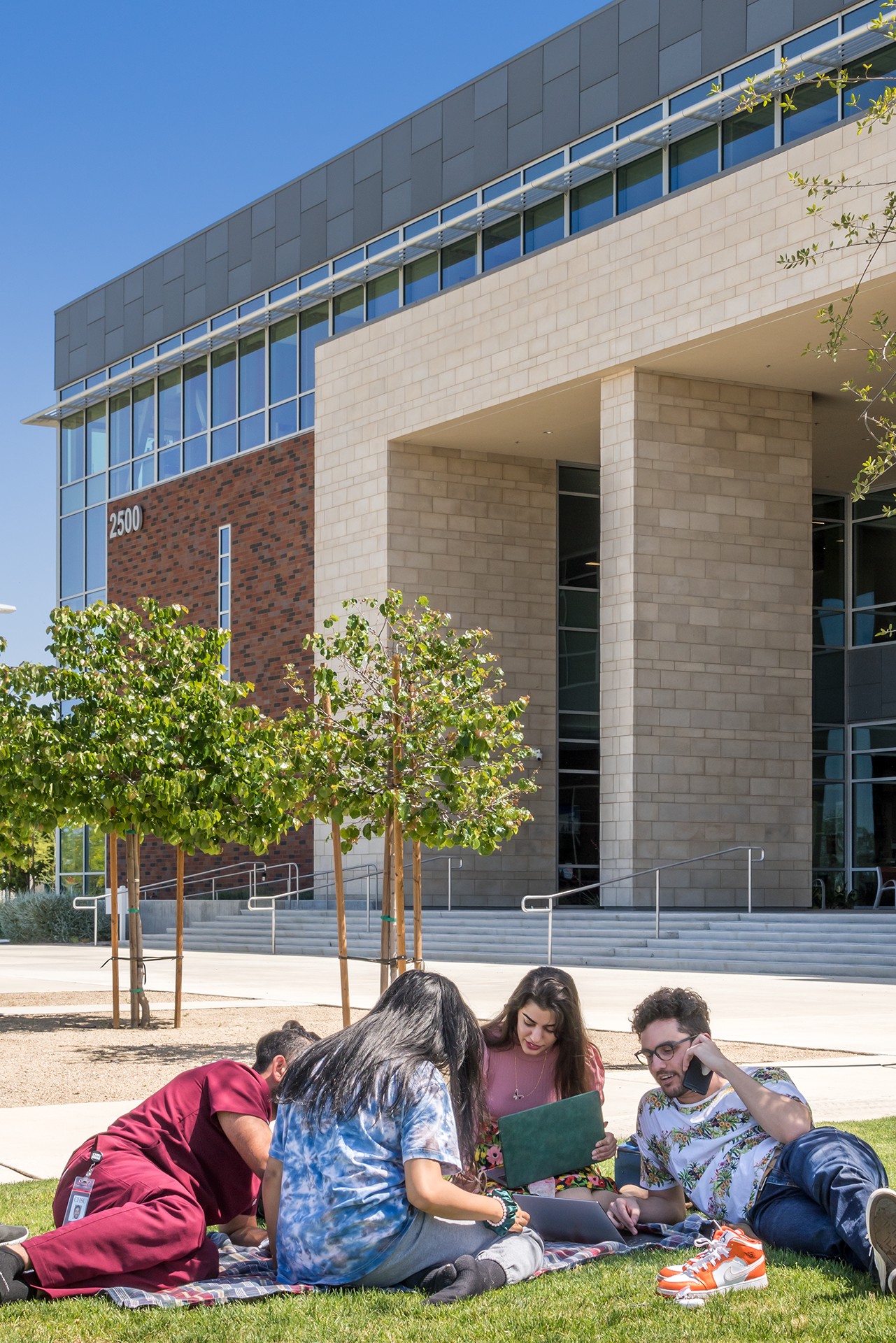
We design healthcare education spaces not just to meet technical requirements but to support the people who will go on to care for our communities. Whether through a state-of-the-art simulation center, a daylight-filled nursing building, or a place-based medical school campus, our work is always rooted in empathy, collaboration, and purpose.
Because healthcare students deserve the best of what design can offer and our communities deserve the best of what they can become.
Related Content

Designing more hospitality in hospital.
Urban design solutions are not a cure-all when it comes to rural healthcare needs.

